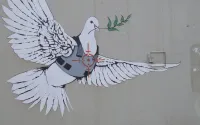26 May 2006 The Independent
Everyone knows about the giant panda. Everyone knows about the tiger and the polar bear and how they are threatened with extinction. For creatures like these, in the words of some rather cynical zoologists, are "charismatic megafauna" - big beasts with loads of photogenic personality.
But what about the minifauna - non-charismatic, perhaps? What about the insects, like the bumblebees, that perhaps play an even more important role in keeping the biosphere ticking over and maintaining the great web of life?
These days, not many people other than specialists have much interest in insects and other "creepy crawlies", but it is increasingly clear that their numbers are declining just as rapidly as the big beasts are, and the consequences may be even more serious.
Bumblebees are just one case in point. Those over the age of 40 may remember how car windscreens were covered once, at the end of a car trip in high summer, with an insect massacre: splattered moths, flies, wasps and gnats. But in recent years more and more drivers are finding their windscreens clear.
Is it just a vague perception? Or might it correspond to something real and serious, the widespread disappearance of insects in general?
Recently, conservationists have started to become convinced that the latter case is true. A number of studies have shown that whole suites of insect species are tumbling in numbers.
Britain's butterflies have declined as a whole by 70 per cent during the past three decades. Several species, including the high brown fritillary, the pearl-bordered fritillary, the wood white and the Duke of Burgundy, have virtually gone. Many of Britain's 900 or so larger moths are thought to be rapidly declining, including once-common species such as the garden tiger and the magpie moth.
Big beetles are becoming rarer in the countryside, which may account for the extinction in Britain 15 years ago of the red-backed shrike, one of our countryside's most beautiful birds (and a big beetle specialist).
And the numbers of mayflies and the other 50 aquatic upwing fly species on which trout feed may have declined by as much 60 per cent since the Second World War, according to a study organised six years ago.
The point is, these declines, even if the public hardly notice them, can have serious knock-on effects, because often insects and other invertebrates form the base of the food chain.
Insect decline, indeed, is emerging as the major theory to explain the mysterious disappearance from Britain's big towns and cities of the house sparrow, which The Independent has championed (it is thought that sparrow parents are no longer finding enough insects to feed their chicks in high summer).
The bumblebee's decline is potentially one of the most serious, because of its crucial role in pollinating plants, including important commercial varieties of flowers, vegetables and fruits.
We are only now waking up to the fact that things appear to be going badly wrong with insects and other invertebrates, or, as the great Harvard zoologist Edward O Wilson famously called them, the "little things that rule the world". And it is not before time.






